Best
BEGINNER
ACOUSTIC GUITAR
-
Overall: Die-Cast Tuning Machines Hold Your Strings In Place With Ease, Helping Stabilise Your Tuning
-
Best Feature: Includes A Host Of Accessories, Including Tuner, Gigbag, Capo And More!
-
TedScore™: 9/10
Best BEGINNER
ACOUSTIC
ELECTRIC GUITAR
-
Overall: Has A Spruce Top And Walnut Fretboard For A Sublime, Bright Tone
-
Best Feature: With Redesigned Scalloped X Bracing That Enriches The Low To Mid-Range
-
TedScore™: 9/10
Best
BEGINNER
ELECTRIC GUITAR
RGA42FM A GUITAR BUILT
FOR SPEED AND
COMFORT
-
Overall:
Fingerboard Radius: 400mmR -
Best Feature:
Nut Width: 43mm -
TedScore™:
9/10
Choosing a guitar feels like looking for a new friend; it’s an exciting and personal adventure.
The options can be overwhelming, with many shapes, sizes, and sounds. Not to mention, there are different guitar brands and makers with good reviews.
I wouldn’t be surprised if you’ll ask, “What guitar should I buy?”.

As a professional electric guitar player, I love the Gibson Les Paul-style guitar because of its high-end quality and reliability.
This brand has proven itself in the guitar world, which is why so many guitarists choose it!
Fender Guitars is also a world-class leading brand in electric guitars, with iconic models such as the Stratocaster and Telecaster.
But that doesn’t mean they’re right for you…
My first advice is to match the guitar to your unique style and needs, not just go for the shiniest one on the wall.
Because let me tell you, the right guitar will feel like an extension of yourself, ready to create music that resonates with your soul.
Understanding Guitar Types
When I stroll into a guitar shop, the selection of guitars can be pretty mesmerizing. Knowing the differences is important because each has its unique voice and feel.
Acoustic Guitars
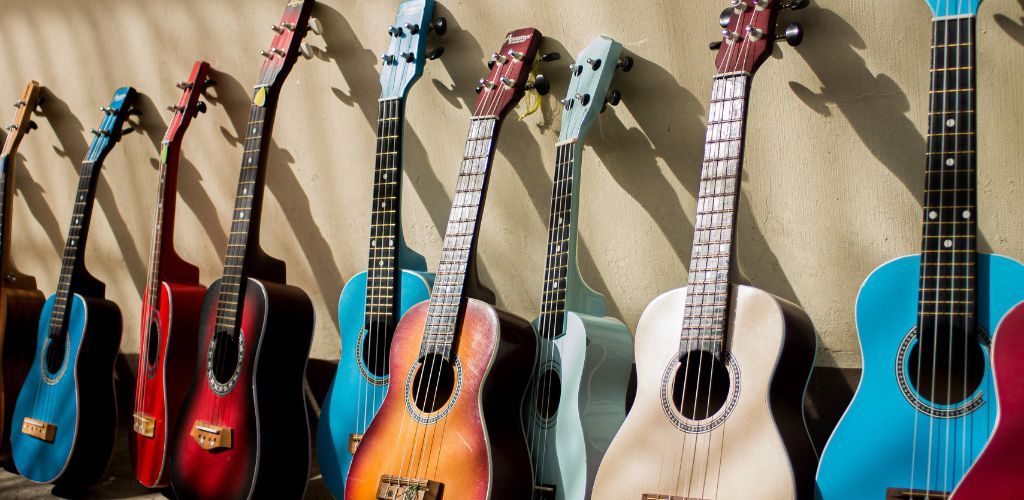
Acoustic guitars are my go-to for a natural and warmer sound. They’re perfect for gritty folk tunes and fireside strumming.
These beauties don’t need electricity, relying on a wooden soundboard and resonant body for their acoustics.
You may read this article if you are interested in how to choose acoustic guitars.
Electric Guitars

I love plugging in an electric guitar when I want to feel the heavy metal power and get a bit rowdy with my playing. They are fantastic for bending notes and playing solos that cut through a mix.
An electric guitar uses pick-ups and an amplifier to belt out sound, so I can rock out even louder, Jimi Hendrix-style! The importance of guitar strings in relation to the overall playability and tone of electric guitars cannot be overstated.
Various materials and gauges of guitar strings significantly influence the sound quality and playing experience.
Classical Guitars
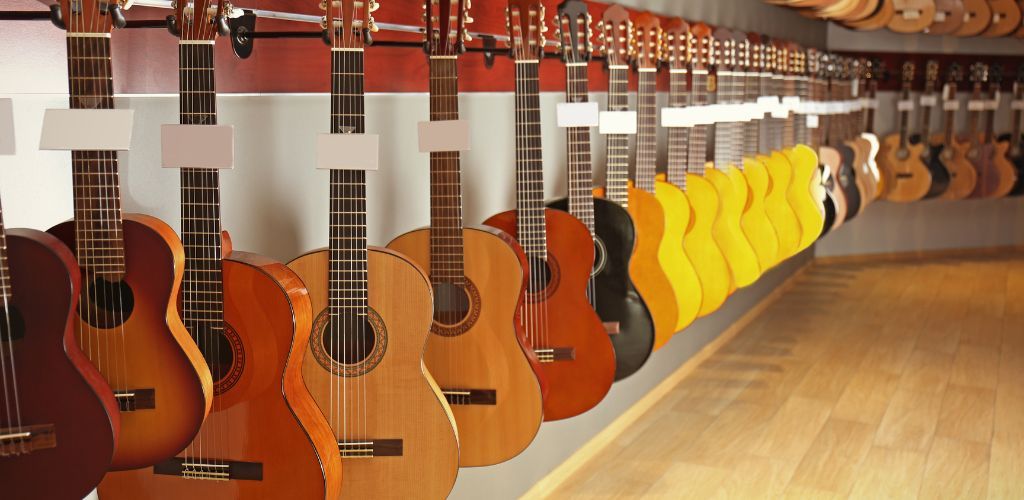
Classical guitars bring me back to traditional vibes, with gentler nylon strings on my fingers.
As a nylon-string guitar, they produce a softer, mellow tone ideal for fingerstyle and classical pieces. Their wider necks give my fingers more room to dance around frets.
You may read this article if you are interested in how to choose classical guitars.
Other Varieties
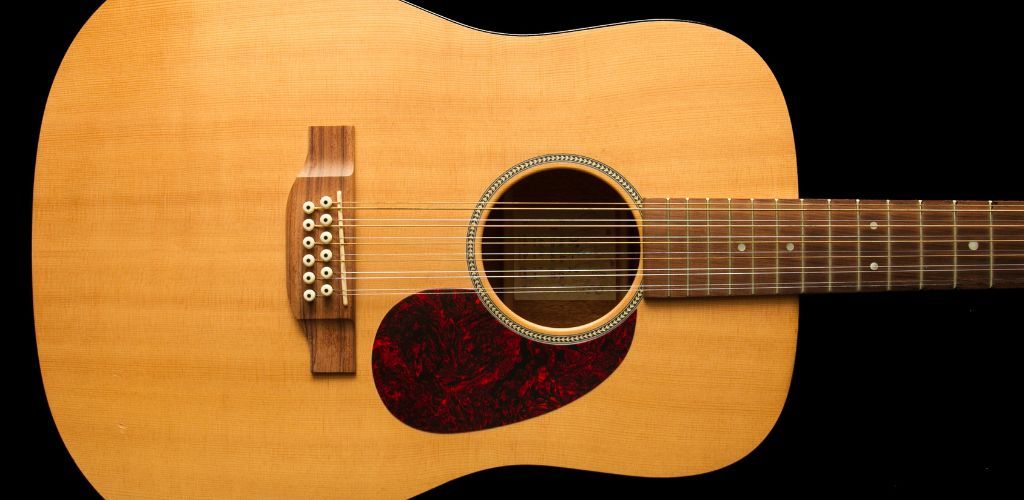
Sometimes, I aim for something a little off the beaten path, and that’s where other guitars come in.
We’ve got acoustic-electric guitars, archtops, resonators, and even 12 strings, each with a unique character. These special types can add a distinctive twist to my music arsenal.
Finding the Right Fit
When I look for a new guitar, my top priority is ensuring it feels like part of me. That perfect guitar should almost disappear in my hands, leaving just the music we make together.
Guitar Size and Shape
Classical and Acoustic guitar
Different guitar sizes and body shapes can greatly impact my playing experience.
Let’s say I’m on the smaller side—a jumbo-sized acoustic might feel like I’m hugging a tree, so I’d look for a concert or parlor guitar instead.
The same goes if I’m pretty tall; a bigger guitar, like a dreadnought, could fit me like a glove, offering richer sounds without feeling cumbersome.
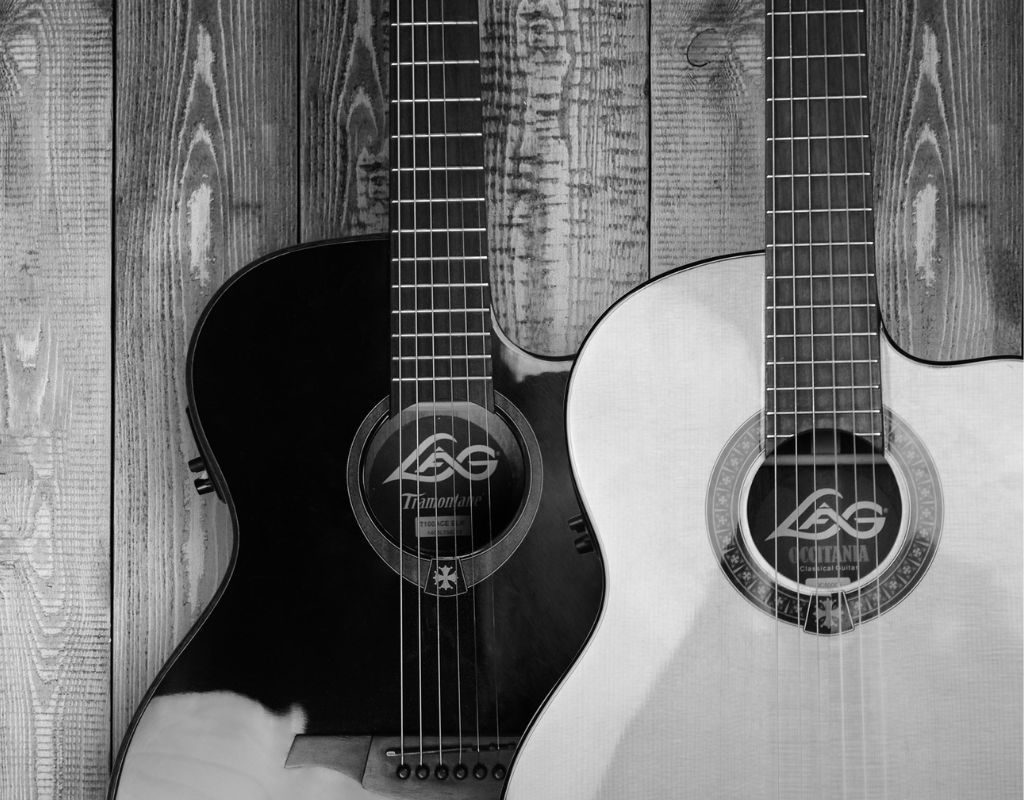
Electric guitar
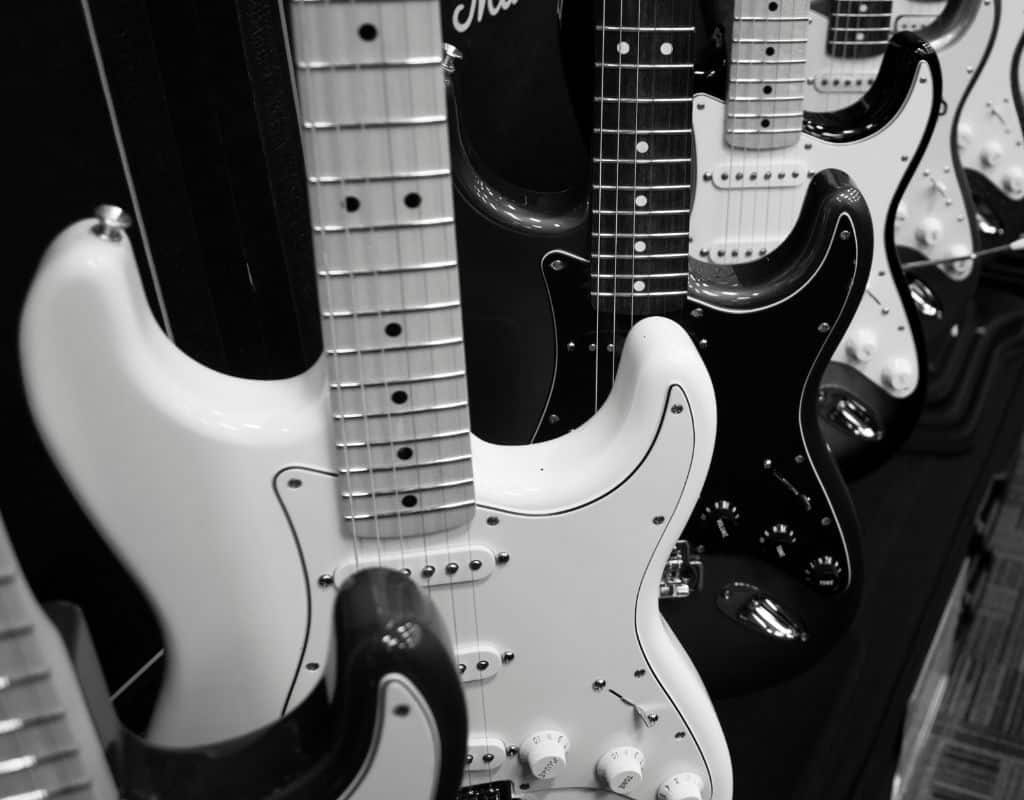
Choosing an electric? The body contours and weight matter a ton.
A lightweight Fender Stratocaster might nestle comfortably against my body, while Les Paul Gibson guitars, with their heft and classic single-cut design, provide a sturdy anchor against my torso. Still, it might weigh me down after a few hours on stage.
You may read How To Choose An Electric Guitar for an electric guitar buying guide.
Guitar Sizing Chart
When choosing between guitar sizes, it’s essential to consider the age and height of the player.
Half-size guitar: Perfect for young children aged 5-7, with a height range of 3’8” to 4’2” (112 cm to 127 cm). These smaller guitars are easier for little hands to manage, making the learning process more enjoyable.
Three-quarter size guitar: This size is ideal for children aged 7-10, with a height range of 4’2” to 4’8” (127 cm to 142 cm). It offers a good balance between playability and sound quality, helping young players develop their skills.
Full-size guitar: This guitar is suitable for children aged 11 and above, with a height range of 4’8” and above (142 cm and above). Full-size guitars provide the richest sound and are the standard choice for most adult players.
Keep in mind that these are general guidelines. The best way to determine the right guitar size is to try out different sizes and find the one that feels comfortable to play. Comfort is key to enjoying your guitar-playing journey.
Playability and Comfort
The feel of a guitar neck in my hand is paramount. Some prefer a slim, modern “C” shape that facilitates swift fretting, while others enjoy a chunky, vintage-style neck that fills the hand.

The fretboard radius could also influence my comfort; a flatter radius is great for fast soloing, while a more rounded one might better accommodate chord strums.
Action and string gauge are my next stops on the playability tour.
If the strings feel like they’re miles away from the fretboard, playing can tire my fingers quickly. I’ll opt for lower action that still avoids buzzing, paired with a string gauge balanced between playability and tone.
Lighter strings bend easily; thicker strings give string guitars a fuller sound but require more finger strength.
Considering Your Budget

When weighing the cost of a guitar, I consider how much I want to spend and what that gets me. It’s a real balancing act between the cash in my wallet and the sweet sound that’ll be music to my ears.
Price Ranges
I find that guitars have a wide range of prices.
For beginners, there’s no need to break the bank; a decent acoustic price can start as low as $100.
The mid-range guitars hover around $300 to $700 for the more seasoned strummers.
And for the pros or anyone looking to splurge, premium models start at about $1,000.
Beginner Guitars ($300-$800)
At this price point, you can expect to find beginner guitars that offer good quality and playability.
Solid top or laminated top: A solid top, often made of spruce or mahogany, provides better resonance and sound quality. Laminated tops are more affordable and durable, making them a good choice for beginners.
Neck and fretboard: Look for a mahogany or maple neck with a rosewood or ebony fretboard. These materials offer a smooth playing experience and durability.
Frets and scale length: Most beginner guitars have 20-22 frets with a scale length of 24.75” or 25.5”, which is comfortable for most players.
Pickups and electronics: Single-coil or humbucker pickups are common on electric guitars. Basic electronics with a 3-way switch and tone and volume controls are sufficient for beginners.
Some popular beginner guitar models in this price range include:
Fender CD-60S Acoustic Guitar: Known for its rich sound and comfortable playability.
Epiphone Les Paul Special II Electric Guitar: This guitar offers the classic Les Paul look and sound at an affordable price.
Yamaha FG800 Acoustic Guitar: A reliable choice with a balanced tone and solid build.
Ibanez GRX20 Electric Guitar: Great for beginners looking to explore rock and metal genres.

Intermediate Guitars ($800-$1500)
At this price point, you can expect to find intermediate guitars that offer improved quality and features.
Solid top: A solid top with a mahogany or spruce back and sides enhances the guitar’s resonance and tonal quality.
Neck and fretboard: Mahogany or maple necks with rosewood or ebony fretboards are common, providing a smooth and durable playing surface.
Frets and scale length: Intermediate guitars often have 22-24 frets with a scale length of 24.75” or 25.5”, offering more versatility for different playing styles.
Pickups and electronics: Humbucker or single-coil pickups with coil-splitting or phase-switching options provide a wider range of tones. Advanced electronics with a 5-way switch and tone and volume controls allow for greater sound customization.
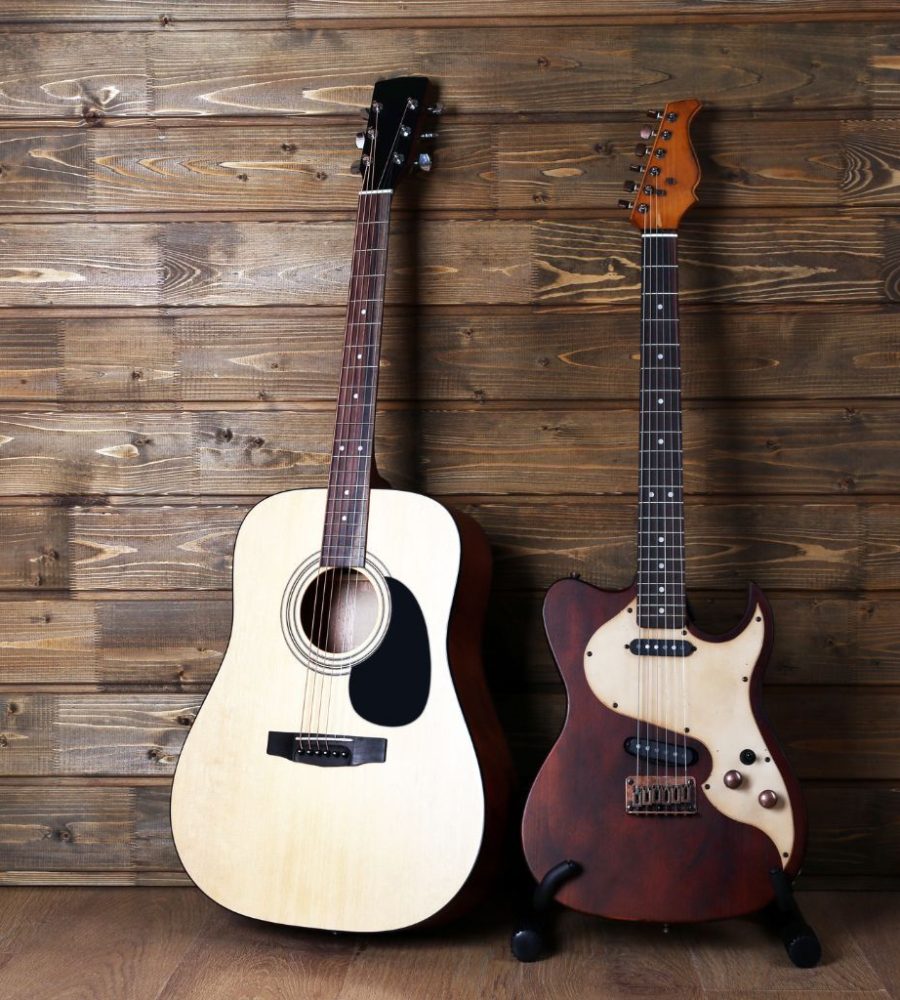
Some popular intermediate guitar models in this price range include:
Taylor GS Mini Acoustic Guitar: Compact yet powerful, perfect for both practice and performance.
Gibson Les Paul Studio Electric Guitar: Offers the iconic Les Paul sound and feel with modern enhancements.
PRS SE Standard 24 Electric Guitar: Known for its versatility and high-quality craftsmanship.
Music Man Stingray Special Electric Guitar: A favorite among players for its sleek design and powerful sound.
Advanced Guitars ($1500+)
At this price point, you can expect to find advanced guitars that offer high-end quality and features.
Exotic tonewoods: Materials like koa, walnut, or ebony provide unique tonal characteristics and stunning aesthetics.
Hand-carved necks: Hand-carved or hand-shaped necks with rosewood or ebony fretboards offer unparalleled playability and comfort.
Frets and scale length: Advanced guitars often have 24-26 frets with a scale length of 24.75” or 25.5”, catering to professional-level playing techniques.
High-end pickups and electronics: Premium pickups with advanced electronics and switching options allow for a wide range of tones and precise control.
Advanced hardware: Features like locking tuners and a tremolo system ensure tuning stability and enhance performance.
Some popular advanced guitar models in this price range include:
Gibson Les Paul Standard Electric Guitar: A legendary model known for its rich tone and exceptional build quality.
Fender American Professional Stratocaster Electric Guitar: Offers classic Stratocaster sound with modern enhancements.
Taylor 814ce Acoustic Guitar: Renowned for its beautiful tone and exquisite craftsmanship.
Music Man JP13 Electric Guitar: Designed for virtuoso players, offering unparalleled playability and sound.
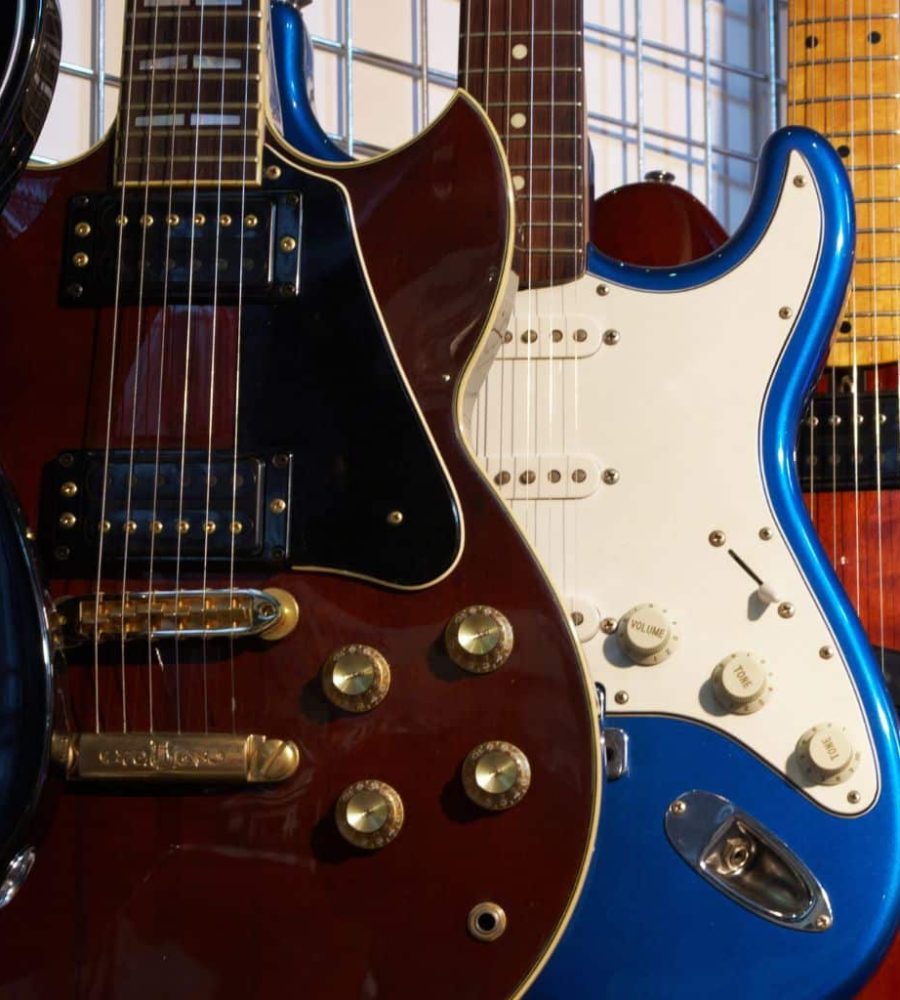
Cost vs. Quality
In my experience, a higher price tag doesn’t always mean better quality. I’ve seen guitars for around $300 that offer fantastic sound and solid build.
On the other hand, paying up for a high-end guitar can mean top-notch materials and craftsmanship, which usually equates to a richer tone and smoother playing.
Exploring Brands and Models
In my journey through guitar shops, I’ve found that the choice boils down to more than just price and looks. It’s about finding the right sound and feel for my musical expression.
Popular Brands
The following guitar manufacturers are known for their high-quality guitars, which guitar players opt to choose!
Epiphone
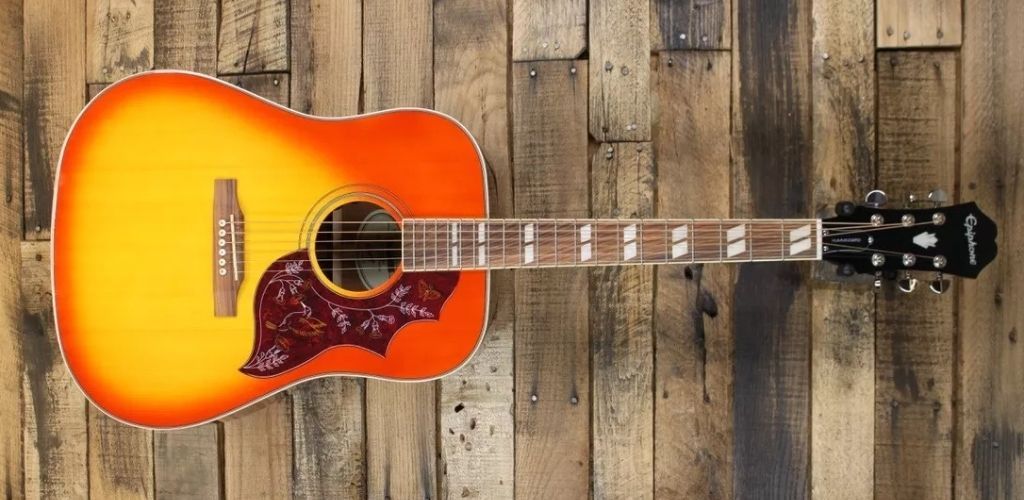
Epiphone guitars offer a blend of quality craftsmanship and affordability, making them a popular choice for both beginner and intermediate players looking for a reliable instrument with a rich heritage.
The Epiphone Hummingbird Studio delivers a surprisingly rich and vibrant sound with a comfortable feel that rivals its more expensive counterparts, making it an excellent choice for both practice and performance.
EPIPHONE HUMMINGBIRD STUDIO ELECTRO ACOUSTIC GUITAR

PERFECT FOR: beginners to professionals
FEATURES: Has a solid Sitka spruce top that creates delicious dynamics, perfect for any genre
OTHER INFO: Loaded with world-renowned Fishman Sonitone™ electronics for a smooth-sailing performance
EPIPHONE HUMMINGBIRD STUDIO ELECTRO ACOUSTIC GUITAR
- With a slim ''D''-shaped neck for a sleek, fast-paced, player-friendly feel
- Boasts a tone, playability, and electronics needed for a top-notch performance
- Provides a big sonic attitude with plenty of presence
- Some users have reported that the action (string height) may require adjustment to achieve optimal playability
When you click ‘Check Price’, you’ll see there are loads of great places to buy this item. Our personal favorite is Sweetwater for the US, and Thomann and Gear4Music for the UK & Europe.
They are the largest music retailers, with excellent customer service, competitive prices, really fast shipping, and the longest guarantees.
The professional musician who wrote this article combined many things,
from the product build, manufacturer’s reputation through to feedback
from other users, to create our famous TedScore™.
Fender
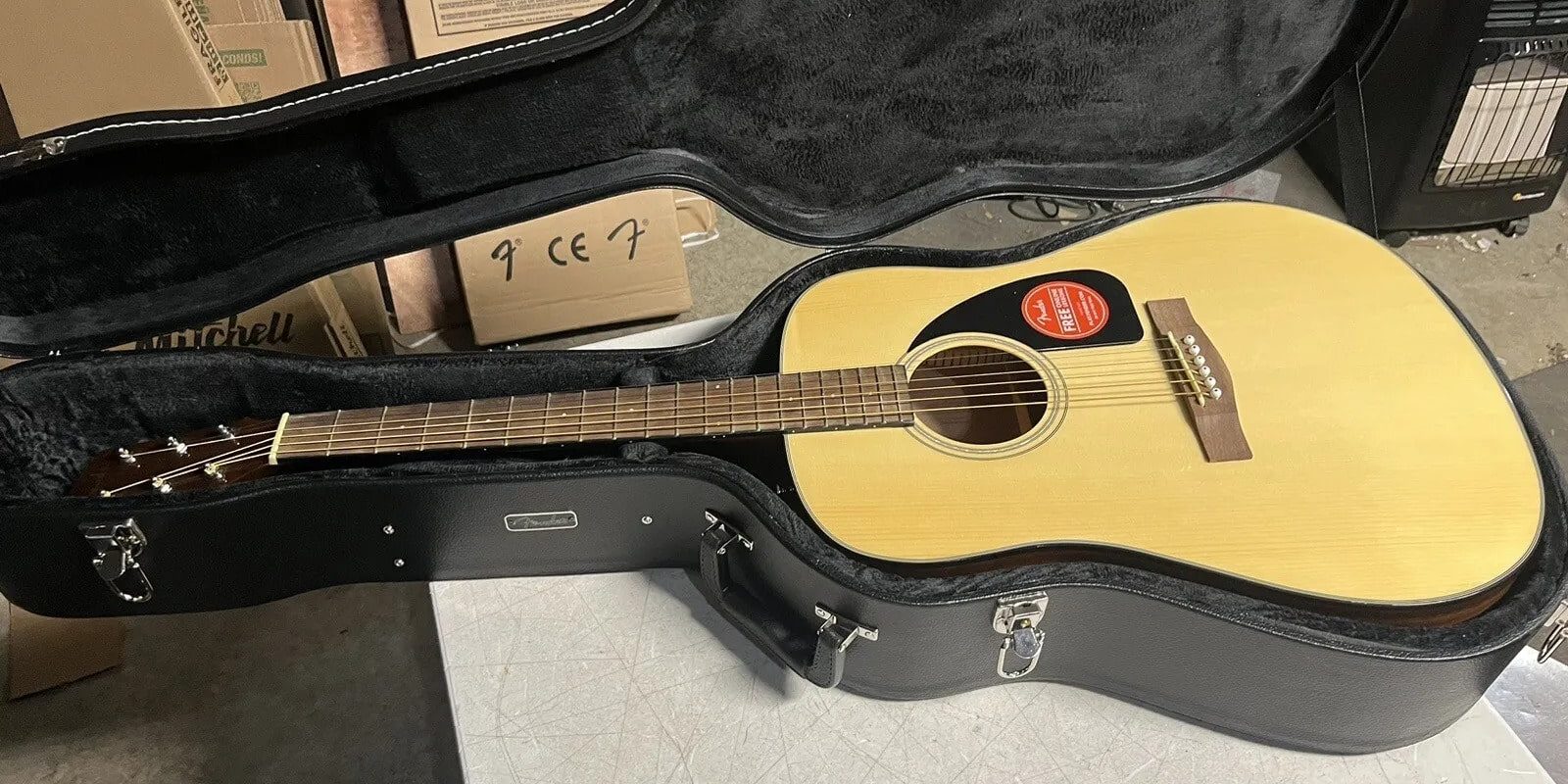
Fender is famed for its Stratocasters and Telecasters, which offer bright, jangly tones that fit perfectly in indie music or surf rock.
After playing the Fender CD-60S, I was thoroughly impressed by its large dreadnought body size and classic tonewoods, which give a rich, resonant sound and comfortable playability.
Fender CD-60 Dreadnought

DESIGNED FOR: You can play the CD-60 as hard as you like – it will stand strong. Die-cast tuning machines hold your strings in place with ease, helping stabilise your tuning.
COMES WITH: GIncludes a host of accessories, including tuner, gigbag, capo and more!
FEATURES: Premium Quality Solid Spruce Top Design Fitted With A Laminated Mahogany Body.
Fender CD-60 Dreadnought
- Comes with multiple accessories
- Solid Spruce top
- Slim neck for easy playability
- May have high action
When you click ‘Check Price’, you’ll see there are loads of great places to buy this item. Our personal favorite is Sweetwater for the US, and Thomann and Gear4Music for the UK & Europe.
They are the largest music retailers, with excellent customer service, competitive prices, really fast shipping, and the longest guarantees.
The professional musician who wrote this article combined many things,
from the product build, manufacturer’s reputation through to feedback
from other users, to create our famous TedScore™.
Gibson
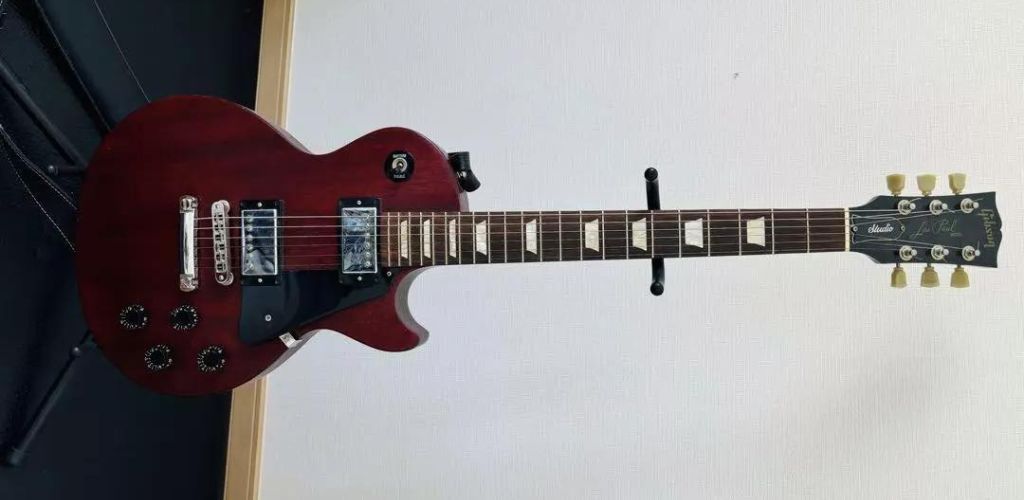
Meanwhile, Gibson’s Les Paul and SG models exude warmth, making them a go-to for rockers craving rich, full sounds.
The Gibson Les Paul truly lives up to its legendary status with its sustain, warm tones, and solid build. It provides me with the best playing experience that justifies its iconic reputation.
Gibson Les Paul

DESIGNED FOR: Pros
COMES WITH: Classic Les Paul design with updated features
FEATURES: Dynamic, vintage, articulate tone thanks to Burstbucker humbuckers
Gibson Les Paul
- Iconic sound
- Great value for money when viewed as a professional investment
- Affordable
- Expensive
- Only good for professionals and advanced players
When you click ‘Check Price’, you’ll see there are loads of great places to buy this item. Our personal favorite is Sweetwater for the US, and Thomann and Gear4Music for the UK & Europe.
They are the largest music retailers, with excellent customer service, competitive prices, really fast shipping, and the longest guarantees.
The professional musician who wrote this article combined many things,
from the product build, manufacturer’s reputation through to feedback
from other users, to create our famous TedScore™.
Ibanez
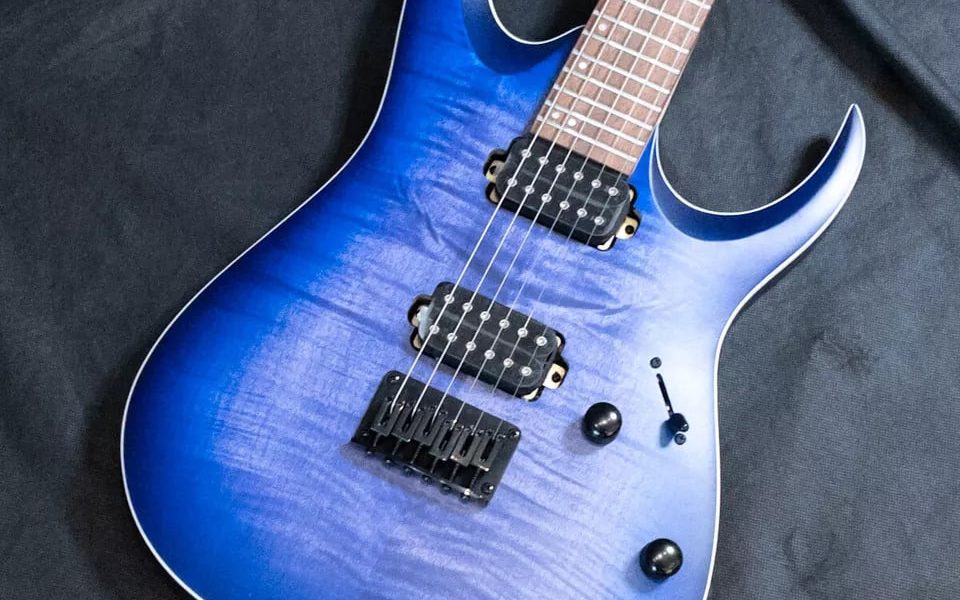
Next come brands like Ibanez, which give me sporty looks with super-sleek designs.
The Ibanez RGA42FM in Blue Lagoon Burst Flat looks stunning and offers a sleek, fast neck and versatile pickups that easily handle everything from clean rhythms to heavy riffs.
Ibanez RGA42FM, Blue Lagoon Burst Flat

PERFECT FOR: Beginner
FEATURES: Fingerboard Radius: 400mmR
OTHER INFO: Nut Width: 43mm
Ibanez RGA42FM, Blue Lagoon Burst Flat
- Fixed bridge provides tuning stability.
- Ideal for rock and metal performers.
- Visually appealing design.
- Lightweight construction.
- High-quality metallic components.
- Comes well set up and is easy to play straight out of the box.
- Can intonate well with heavier gauge strings.
- Possible minor manufacturing defects.
- Body can be easily damaged due to its light build.
- Produces flat high-gain sounds, may need modification with better pickups.
- Price may be too high for its value, especially if you are looking for high-gain tones.
- Fingerboards may require more maintenance than some other materials.
When you click ‘Check Price’, you’ll see there are loads of great places to buy this item. Our personal favorite is Sweetwater for the US, and Thomann and Gear4Music for the UK & Europe.
They are the largest music retailers, with excellent customer service, competitive prices, really fast shipping, and the longest guarantees.
The professional musician who wrote this article combined many things,
from the product build, manufacturer’s reputation through to feedback
from other users, to create our famous TedScore™.
Yamaha
Yamaha whispers reliability and great value, which is perfect for when I’m watching my wallet.
The Yamaha FGX800C impressed me with its clear, balanced acoustic sound and the versatility of a reliable onboard preamp system for easy amplification. I usually recommend this to my students looking for an affordable acoustic-electric guitar.
Yamaha FGX800C Electro Acoustic Guitar

PERFECT FOR: beginners to professional players
FEATURES: Has a spruce top and walnut fretboard for a sublime, bright tone
OTHER INFO: With redesigned scalloped X bracing that enriches the low to mid-range
Yamaha FGX800C Electro Acoustic Guitar
- Projects a balanced, resonant tone
- Can be used for a variety of playing styles
- Boasts classic aesthetics with many hidden modern elements
- With a plastic nut and saddle
When you click ‘Check Price’, you’ll see there are loads of great places to buy this item. Our personal favorite is Sweetwater for the US, and Thomann and Gear4Music for the UK & Europe.
They are the largest music retailers, with excellent customer service, competitive prices, really fast shipping, and the longest guarantees.
The professional musician who wrote this article combined many things,
from the product build, manufacturer’s reputation through to feedback
from other users, to create our famous TedScore™.
Washburn
Washburn guitars are renowned for their fine craftsmanship, history of innovation, and diverse models, which cater to players across all genres and skill levels.
The Washburn F11SCE Heritage impressed me with its bright, articulate sound, the seamless playability of its cutaway design, and the convenience of its built-in tuner and preamp for easy amplification.
Washburn F11SCE Heritage Electro Acoustic Guitar

PERFECT FOR: singers and songwriters
FEATURES: Delivers warm characters, rich harmonics, and plenty of projection
OTHER INFO: Incredibly comfortable to play with, thanks to its satin neck and cutaway
Washburn F11SCE Heritage Electro Acoustic Guitar
- With Fishman Electronics to enhance performance for the stage
- Designed to be as comfortable to play as it is tonally versatile
- Suits a wide variety of playing styles and musical genres
- The tuner may take some time to get used to
When you click ‘Check Price’, you’ll see there are loads of great places to buy this item. Our personal favorite is Sweetwater for the US, and Thomann and Gear4Music for the UK & Europe.
They are the largest music retailers, with excellent customer service, competitive prices, really fast shipping, and the longest guarantees.
The professional musician who wrote this article combined many things,
from the product build, manufacturer’s reputation through to feedback
from other users, to create our famous TedScore™.
Martin and Taylor
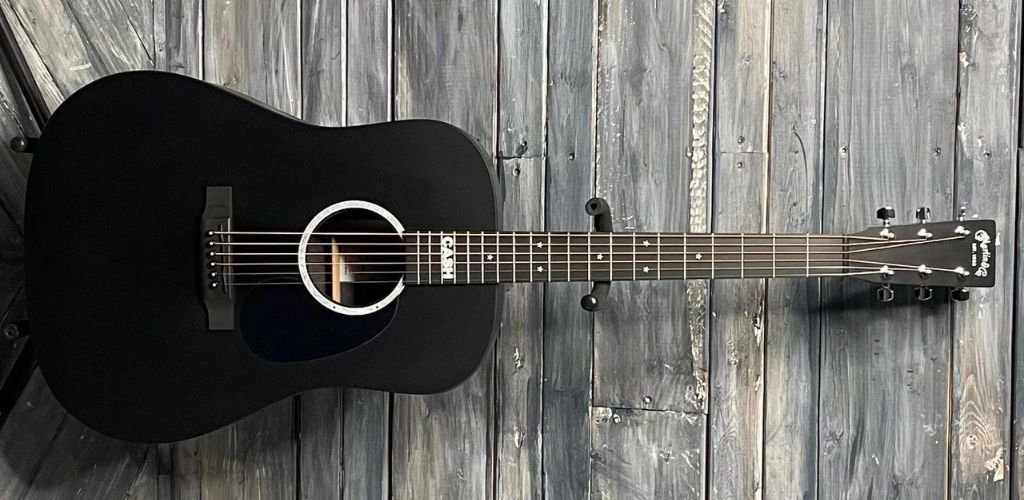
Of course, I can’t forget Martin and Taylor, two maestros of the acoustic arena, whose strums fill the air with pure, organic melodies that make my heart sing.
The Martin DX Johnny Cash model exudes a bold, resonant tone and a striking Jett Black finish that pays a fitting tribute to the Man in Black’s legendary sound and style.
Martin DX Johnny Cash - Jett Black
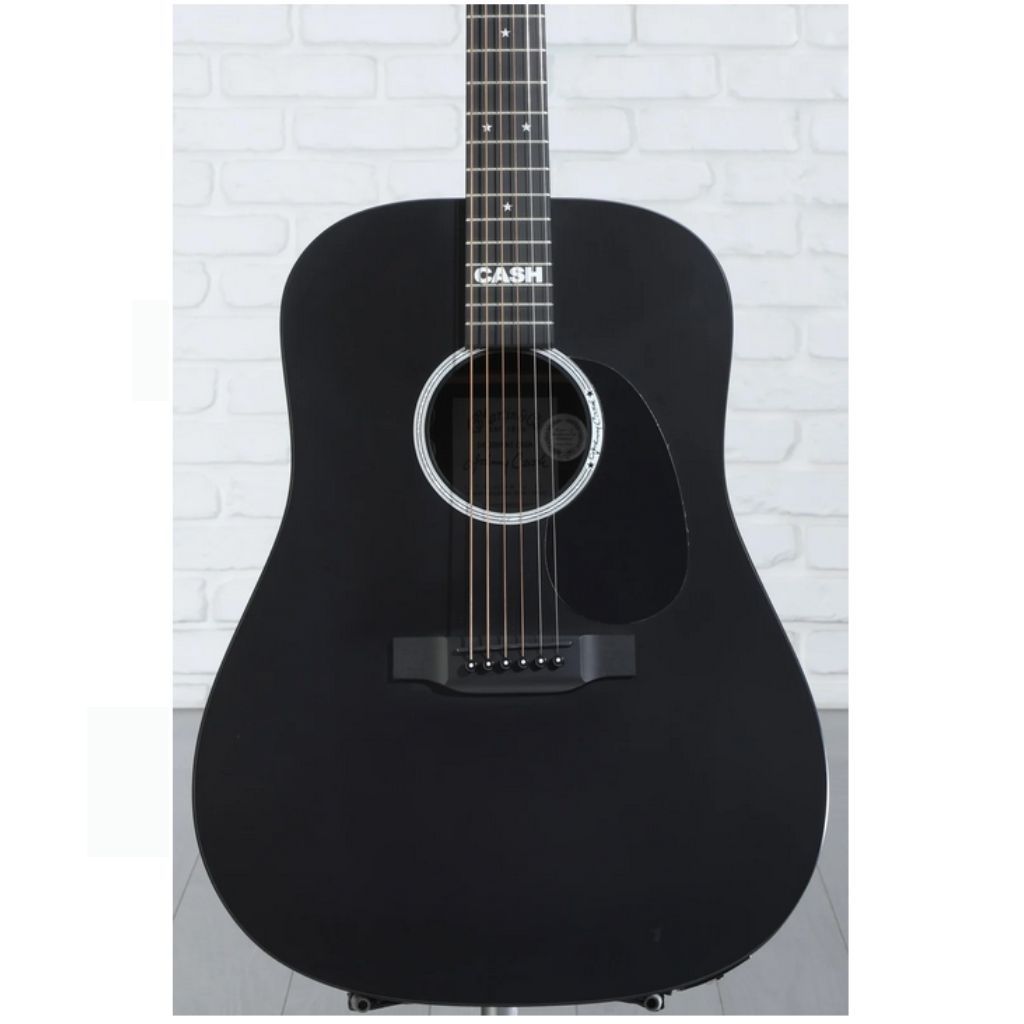
FEATURES: An unmistakable Martin feel and tonality, along with a comfortable Performing Artist-profile neck and Fishman electronics for a top-notch plugged-in tone.
OTHER INFO: An eye-catching black satin finish, custom “autographed” rosette, and star fingerboard inlay with CASH at the fretboard.
- Dreadnought body ensures ample projection
- Johnny Cash signature DX A/E
- PA-profile black birch laminate neck and Richlite fingerboard
- The higher price point might be a consideration for budget-conscious buyers.
- May be less appealing to purists due to its HPL (high-pressure laminate) construction.
When you click ‘Check Price’, you’ll see there are loads of great places to buy this item. Our personal favorite is Sweetwater for the US, and Thomann and Gear4Music for the UK & Europe.
They are the largest music retailers, with excellent customer service, competitive prices, really fast shipping, and the longest guarantees.
The professional musician who wrote this article combined many things,
from the product build, manufacturer’s reputation through to feedback
from other users, to create our famous TedScore™.
Taylor 214ce-N Electro-Acoustic Nylon String guitars enchanted me with their exceptionally warm tone and neck comfort, alongside top-notch electronics that make it a dream for live performances and intimate settings.
Taylor 214ce-N Nylon String Electro Acoustic

DESIGNED FOR: Beginners To Advance
OTHER INFO: Neck Material - Tropical Mahogany
FEATURES: Three-ring rosette and Italian acrylic inlay
Taylor 214ce-N Nylon String Electro Acoustic
- Comfortable neck and fingerboard
- High-quality tonewoods
- Rich sound
- Nylon bracing for stability and resonance
- Laminated top may not be as durable
- May need a setup for optimal sound
When you click ‘Check Price’, you’ll see there are loads of great places to buy this item. Our personal favorite is Sweetwater for the US, and Thomann and Gear4Music for the UK & Europe.
They are the largest music retailers, with excellent customer service, competitive prices, really fast shipping, and the longest guarantees.
The professional musician who wrote this article combined many things,
from the product build, manufacturer’s reputation through to feedback
from other users, to create our famous TedScore™.
Features and Specifications
Selecting the right guitar is like finding a new friend. Look for qualities that resonate with you, both musically and aesthetically.
Parts of a Guitar
The main body of the guitar can be made of various tonewoods such as mahogany, spruce, or koa. The body shape and material significantly influence the guitar’s sound and resonance.
The long, thin part of the guitar that connects the body to the headstock. The neck’s shape and material affect playability and comfort.
The flat piece of wood glued to the neck, where the frets are embedded. The fretboard material, often rosewood or ebony, impacts the feel and tone.
The raised bars on the fretboard that divide the neck into different segments. Frets determine the pitch of the notes when the strings are pressed down.
The part of the guitar that holds the tuning machines. The headstock design can affect tuning stability and aesthetics.
The mechanisms that adjust the pitch of the strings. High-quality tuners ensure the guitar stays in tune.
The six strings that produce the sound of the guitar. Different string materials and gauges affect the tone and playability.
The magnetic or piezoelectric devices that capture the vibrations of the strings and send them to an amplifier. Pickups are crucial for electric guitars, influencing the sound and tone.
The circuitry and controls that allow the player to adjust the tone and volume of the guitar. Advanced electronics offer more tonal options and customization.
The part of the guitar that holds the strings in place and transfers their vibrations to the body. The bridge design affects the guitar’s sustain and intonation.
The small piece of plastic or bone that separates the headstock from the fretboard. The nut’s material and height impact the guitar’s action and tuning stability.
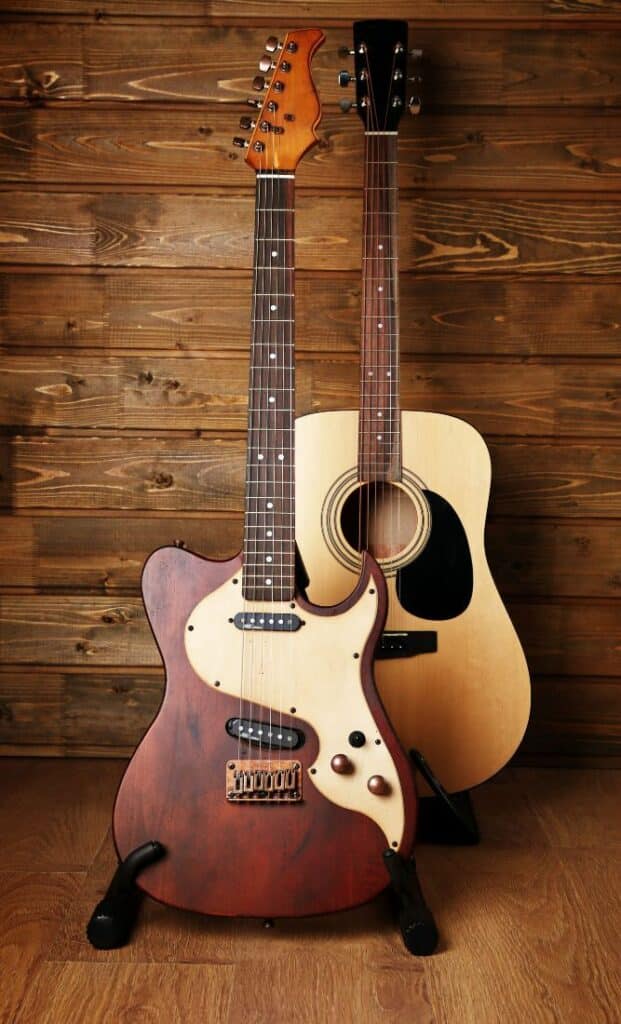
Understanding the different parts of a guitar can help you appreciate its construction and playability, making it easier to choose the right instrument for your needs.
Body Materials
I’m keen to chat about body materials because they’re the backbone of your guitar’s tone.
Solid woods, like spruce or mahogany, offer richer sounds and improve with age.
Laminates are more affordable and resilient but lack the tonal quality of their solid body guitars.
String Types
The voice of your guitar is the strings!
Nylon strings on a classical guitar serenade with a soft, warm tone, perfect for classical or flamenco vibes.
On the other hand, steel strings project a brighter sound and suit genres like rock, country music, or folk.
Hardware and Pickups
Let’s talk about hardware and pickups!
The quality of your tuning determines how well your guitar stays in tune.
Pickups are pivotal for electric guitars. Single coil pickups give a crisp sound, while humbucker pickups offer a thicker tone.
Accessories and Add-Ons
Once I’ve picked out my perfect guitar, I always remember that the right accessories can make playing more enjoyable. Let’s take a peek at the must-haves and the nice-to-haves.
Essential Guitar Accessories
Straps and tuners are a guitarist’s best friend; they keep me playing comfortably and in tune.
Guitar Straps: I prefer straps with adjustable lengths to maintain my playing posture.
Guitar Tuner: Clip-on tuners are super convenient, and I always have one clipped on my headstock.
Guitar pedals: For electric guitar players, exploring pedals is a great way to enhance your unique sound.
A reliable case is critical to protect my guitar from dings and scratches. Cases come in two types:
Gig Bags: They’re lighter and generally have pockets for my sheet music and cables.
Hard Cases: These offer the best protection, perfect for frequent travelers like me.

Optional Extras
Capos: They help me easily change the key of my guitar, expanding my musical range.
Slide: A slide can give me that sweet, bluesy sound that I can’t get enough of.
- Soundhole Covers: Great for reducing feedback when I plug in my acoustic guitar.
- String Winders/Cutters: They save me time and hassle when changing strings.
Where to Buy

When it comes time to pick up a new guitar, knowing where to shop can be as important as the instrument itself.
It’s a personal journey, and I want to make sure you find a place that fits you, both in service and selection.
Local Music Stores
I love popping into my local music store. It’s where you can strum a few chords and really feel the guitar’s personality!
The experts there often have a wealth of knowledge and are eager to help. They understand the local scene and can offer tailored advice that you won’t find just anywhere.
Online Retailers
On the flip side, I can’t deny the convenience of online shopping.
You can often snag great deals and find a vast selection. Plus, customer reviews help me gauge what’s rocking the guitar world.
But remember, buying online means you won’t get to test drive your new axe before it arrives at your doorstep.
Making the Final Decision
Before you purchase your first guitar, a couple of nuggets of wisdom can make all the difference.
Testing Guitars
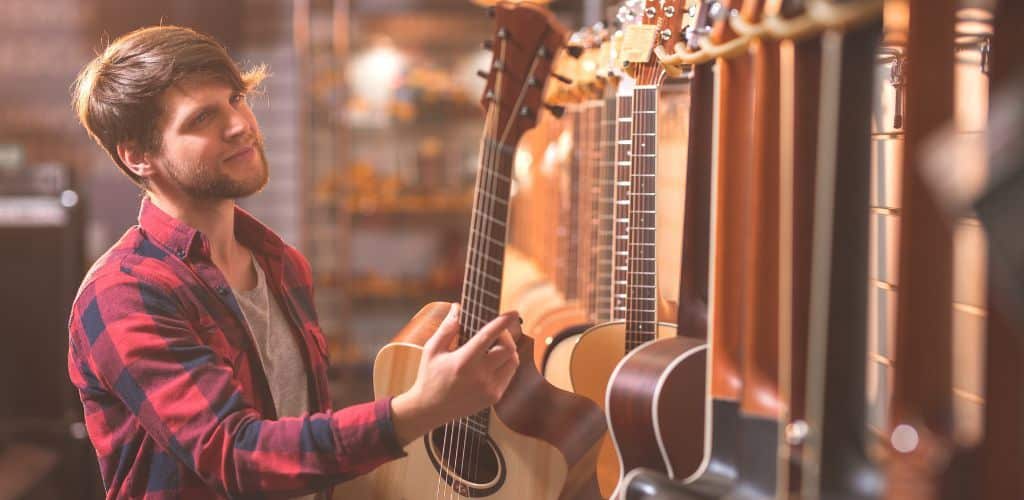
I cannot stress enough how vital it is to play a guitar before buying it. Each guitar has its particular style, unique feel, and sound, so you’ll want to get a real sense of it.
Testing different models can help aspiring musicians experience the emotional appeal of playing guitar and find the right instrument as their skills improve.
One thing you can do is to make a list of nearby stores where you can test guitars.
Guitar Center
Local Music Shop
Pawn Shops (although be super careful here…)
How the guitar feels in your hands: Is it too heavy? Too light?
The ease of playability: Can I move my fingers quickly across the fretboard?
Reading Reviews
Next up, looking at guitar reviews!
Reviews offer an insight into the experiences of others, which can be incredibly useful. I stick to trustworthy sources when reading reviews, such as:
Ultimate Guitar
MusicRadar

When you’re reading, focus on the quality, reliability, and customer service experiences. And remember, stay objective and watch for reviews that resonate with similar needs to yours!
What Guitar Should I Buy:
My Final Remarks
When I set out to find that perfect guitar, I knew it had to feel just right in my hands. I need to be sure that it fits me before I buy it.
Here’s a quick breakdown to keep in mind:
Budget: Set a max and aim for the best within it.
Purpose: Are you gigging, recording, or just jamming at home?
Type: Acoustic, electric, or classical – these musical instruments have their own unique musical tastes.
Choosing a guitar is a personal quest—and it should!
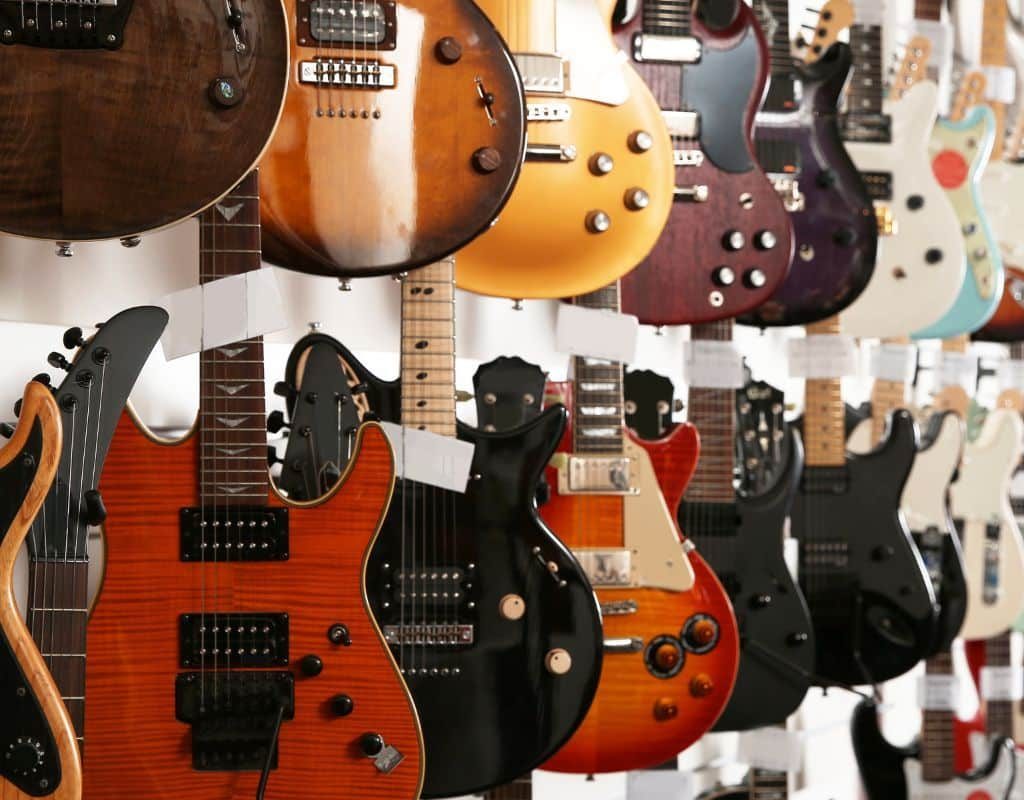
We all have unique tastes and needs that our instruments should cater to. Remember, it’s not just about the guitar’s looks; it’s how it feels, sounds, and connects with you, whether guitar practicing or performance.
Keep it breezy, take your time, and trust your gut. Happy strumming!
Wait! Just a last-minute suggestion!
Whether you’re a budding guitarist making your first purchase or a seasoned player considering a new addition to your collection, this next article offers valuable insights to inform your choice between acoustic and electric guitars.
FAQ's
Buying an expensive electric guitar depends on your budget, playing skill level, and commitment to playing. High-quality, expensive guitars can enhance sound and playability but may not be necessary for beginners; these guitars are made for professional musicians and guitarists. Investing in a premium guitar could benefit your sound and technique development if you are serious about your musicianship and can afford it without financial strain.
For a beginner to play guitar, it’s generally better to start with an instrument or equipment that offers good quality at an affordable price, ensuring it’s comfortable to use and appropriate for learning the basics without a large initial investment. Beginners can start by playing an acoustic guitar before buying their first electric guitar. As guitar playing skills improve, one can always upgrade to more advanced and specialized gear tailored to their developing preferences and needs.
When looking for a beginner guitar, prioritize playability with a comfortable neck and action that isn’t too high, making it easier to press the strings and overall build quality that stays in tune and doesn’t buzz. Additionally, seek a guitar that fits your budget while offering a pleasing tone and is durable enough to withstand the learning process.










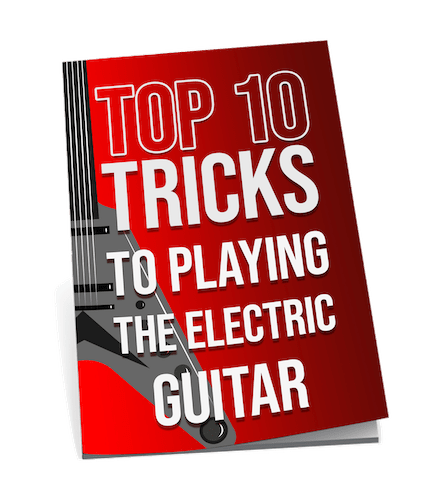
An enlightening read on the diverse world of guitars, Lewis Turner. I was particularly drawn to the segment on jazz guitars – or rather, the absence of. While major brands like Gibson and Ibanez do cater to the jazz genre, it would’ve been beneficial to explore models specific to jazz, such as hollow-body guitars. Your expertise could guide many in making informed decisions.
Totally dig the brand shoutouts. Epiphone and Fender are classics for a reason. But don’t forget Gretsch, they’ve got that unique retro vibe.
Regarding body materials, I think the article oversimplifies a bit. For instance, the resonance and tone quality between mahogany and maple are vastly different, which can significantly influence a guitar’s sound. I believe beginners especially could benefit from a deeper dive into how these materials affect playability and sound beyond just the general categories provided.
Actually, TechieGuy93, while you’re correct on resonance differences, for most beginners, these nuances might be overly technical. It’s more about feel and playability at their stage.
Came here looking for bass guitars, ended up in the wrong neighborhood. Any chances you’ll guide us lost souls too, Lewis Turner?
Thanks for the feedback, Tom and Jane! I’ll consider a bass guitar guide next.
BassmanTom, you made my day lol. But seriously, a bass guitar guide would be great.
Hey Lewis Turner, loved the breakdown of guitar types. Been torn between an electric and an acoustic for months now. This article might’ve just tipped the scales for me haha.
Great overview on the brands. I’ve played a Fender Strat for years and absolutely love it for its versatility. But you mentioned Ibanez for its capabilities in metal and hard rock, which got me thinking about possibly adding one to my collection. Any specific Ibanez models you’d recommend for that classic metal sound?
Quick q, does the guitar sizing chart take into account arm reach or just overall height? Can’t find a solid answer anywhere.
Lewis Turner, thanks for the detailed guide! As someone totally new to guitars, I’m curious about the differences in playability between classical and acoustic. Does one tend to be easier for beginners to learn on?
Hey Mia T., classical guitars usually have wider fretboards which can be easier on your fingers when starting out!